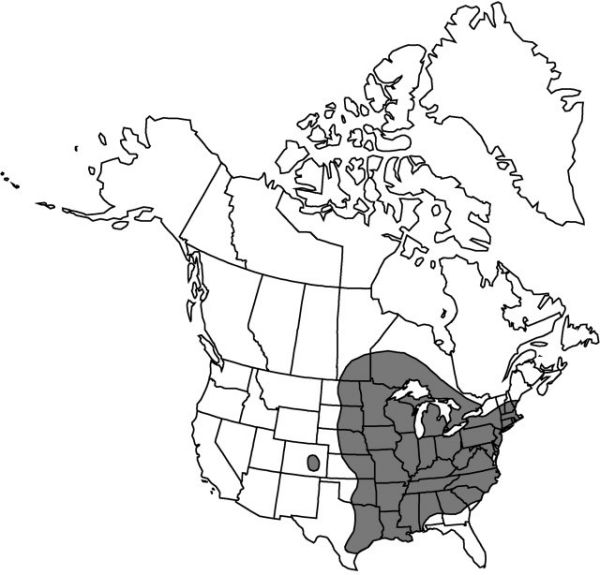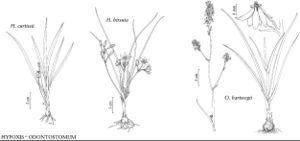Difference between revisions of "Hypoxis hirsuta"
Bull. Torrey Bot. Club 5: 118. 1894.
FNA>Volume Importer |
FNA>Volume Importer |
(No difference)
| |
Revision as of 21:41, 16 December 2019
Leaves (1–)2–5(–15) mm wide, soft, flexible, essentially glabrous or sparsely to densely pubescent. Scape (4–)5–17(–25) cm. Inflorescences umbellate, 1–5(–7)-flowered; proximal 2 flowers, when present, always paired; bracts (1–)2–10(–17) mm. Flowers: tepals (3–)6–10(–17) × 2–4 (–5) mm, shorter than pedicel, much longer than ovary; anthers 1.5–3.5(–4) mm; ovary obconic, (1–)2–4 × (1–)2–4 mm, densely pubescent; pedicel (6–)9–25(–30) mm, usually 2+ times longer than bracts. Seeds black, lustrous, (0.9–)1–1.5(–1.7) mm, coarsely muricate.
Phenology: Flowering spring–summer.
Habitat: Wet to dry woodlands and prairies
Elevation: 0–1700 m
Distribution

Man., Ont., Sask., Ala., Ark., Colo., Conn., Del., D.C., Ga., Ill., Ind., Iowa, Kans., Ky., La., Maine, Md., Mass., Mich., Minn., Miss., Mo., Nebr., N.H., N.J., N.Y., N.C., N.Dak., Ohio, Okla., Pa., R.I., S.C., S.Dak., Tenn., Tex., Vt., Va., W.Va., Wis.
Discussion
Very rarely, specimens of Hypoxis hirsuta have cylindrical ovaries and/or bracts nearly equaling the pedicels. These specimens are recognized by the umbelliform inflorescence typical of H. hirsuta. The condition appears to be pathological and is associated with a lack of seed development.
Selected References
None.
